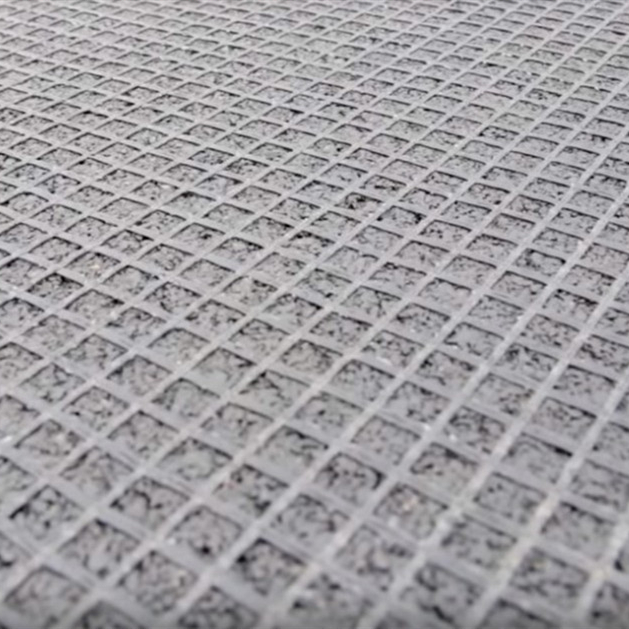close
Choose Your Site
Global
Social Media
Views: 0 Author: Site Editor Publish Time: 2024-02-18 Origin: Site








Geogrids are an essential component in various construction projects, offering a wide range of applications and countless advantages. These specialized materials, made from high-strength polymers, are designed to provide reinforcement and stability to soil and other materials. In this article, we will explore the key applications of geogrids and delve into their advantages in construction and engineering.
Geogrids are a versatile and essential component in the field of civil engineering and construction. These high-strength materials consist of a grid-like structure made of polymer or steel, designed to provide reinforcement and stabilization to soil and other materials. The applications of geogrids are diverse and play a crucial role in enhancing the overall performance and longevity of various infrastructure projects.
One of the primary uses of geogrids is in the construction of roads and highways. When incorporated into the pavement structure, geogrids act as reinforcement layers, distributing the load and reducing stress on the underlying soil. This not only increases the strength and durability of the road but also minimizes the occurrence of cracks and rutting. Geogrids also help in reducing the thickness of the pavement layers, resulting in cost savings and faster construction times.
In addition to roads, geogrids find extensive application in reinforcement of slopes and retaining walls. These structures are prone to soil erosion and instability, especially in hilly and mountainous regions. By installing geogrids, engineers can effectively reinforce the soil, preventing landslides and maintaining the structural integrity of slopes and walls. Geogrids also aid in the construction of mechanically stabilized earth (MSE) walls, which are widely used in bridge abutments, railway embankments, and other geotechnical projects.
Geogrids are also employed in the construction of parking lots and industrial yards. These areas experience heavy loads and traffic, which can result in soil deformation and pavement failures. By incorporating geogrids into the base layers of these surfaces, the load is distributed more evenly, reducing the risk of settlement and improving the overall performance of the pavement. This not only enhances safety but also extends the lifespan of the parking lot or yard, reducing the need for frequent repairs and maintenance.
Another noteworthy application of geogrids is in the field of soil erosion control. In areas where soil erosion is a concern, such as riverbanks, coastal regions, and construction sites, geogrids can be used to stabilize the soil and prevent its displacement. The open-grid structure of geogrids allows vegetation to grow through, further strengthening the soil and providing a natural and sustainable solution for erosion control.
Geogrids are an essential component in the field of civil engineering and construction. These advanced materials offer numerous advantages that make them a popular choice in various applications. One of the key advantages of geogrids is their ability to enhance soil stability and reinforce weak ground. By distributing load and providing additional strength, geogrids effectively prevent soil erosion and subsidence, ensuring the longevity and durability of structures.
Another advantage of geogrids is their ability to improve the bearing capacity of soil. When used in road construction, geogrids act as a stabilizing force, distributing the weight of vehicles evenly and reducing the risk of pavement failure. This not only increases the safety of the roads but also extends their lifespan, reducing the need for frequent repairs and maintenance.
Geogrids also play a crucial role in retaining walls and slope reinforcement. These structures are often subjected to immense pressure from soil or water, which can lead to instability and collapse. By incorporating geogrids into the design, engineers can significantly enhance the stability and strength of these structures, minimizing the risk of failure and ensuring the safety of nearby areas.
In addition to their structural benefits, geogrids are also environmentally friendly. They are made from high-quality, durable materials that are resistant to degradation and chemical deterioration. This means that geogrids can withstand harsh environmental conditions, including exposure to chemicals and UV radiation, without compromising their performance. As a result, they have a longer lifespan compared to traditional construction materials, reducing the need for frequent replacements and minimizing waste.
Furthermore, geogrids are cost-effective solutions for various construction projects. Due to their lightweight nature and ease of installation, they require minimal labor and resources, resulting in reduced construction time and overall project costs. Additionally, the long-term benefits, such as improved structural integrity and reduced maintenance expenses, make geogrids a wise investment for both private and public infrastructure projects.
Geogrids have a wide range of applications in civil engineering, including road construction, slope stabilization, parking lot reinforcement, and soil erosion control. They enhance the strength and durability of infrastructure projects, leading to cost savings and sustainable development. Geogrids offer advantages such as improving soil stability, enhancing bearing capacity, and reinforcing structures, ensuring the longevity and safety of projects. They are also environmentally friendly and cost-effective, making them a sustainable choice for engineers and project owners. Incorporating geogrids into construction projects guarantees long-term benefits and contributes to the success and sustainability of the built environment.